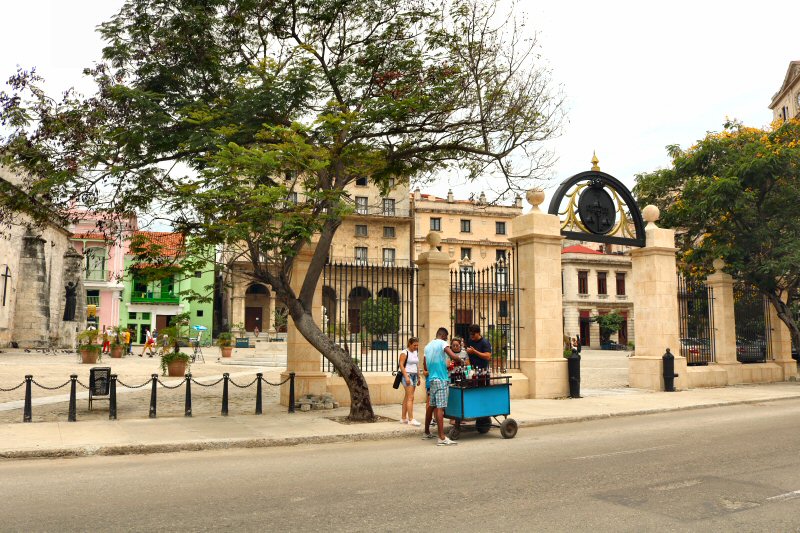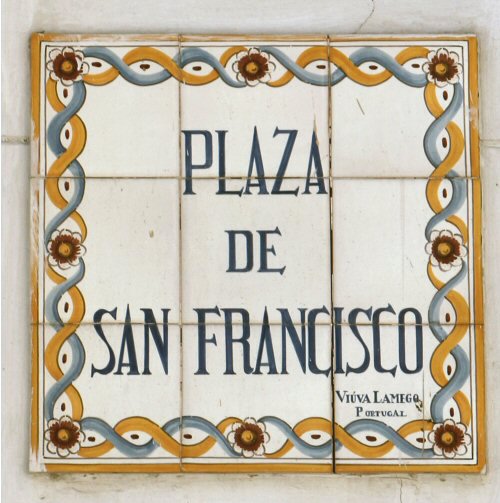
HISTORICAL ASPECTS OF THE SQUARE
The east part of the current Plaza de San Francisco was occupied by a small inlet that opened to the bay, as seen in the city plan of Havana, done by Cristóbal de Roda in 1603. Cristóbal de Roda, the nephew of the famous Italian military engineer Juan Batista Antonelli, was also a successful military engineer that has participated in important constructions in Cuba, such as the Castillo del Morro and Castillo de La Punta. The remaining part of the area was just a narrow strip of ground between the Oficios street and the sea, and could not be considered as a square.
Before 1559 there was a crowded open market, and the inlet that occupied more than half of the current square, was used by the galleons as a place where they unloaded the slaves and received service. One of the water channels of the Zanja Real (Royal Ditch) was terminating in the area between the cabildo (town hall) and the pier. This water source was used to supply water to the victual ships that tied up at the wharfs. Zanja Real that was supplied by the Almendares river, was the first water channel built in Cuba to supply water to the city of Havana. The area was used also for other purposes; it served as the deposit place of the goods that was brought by the ships. This function lasted until the construction of the sheds on the docks.
In 1548, with the beginning of the construction of the Iglesia y Convento de San Francisco de Asís that replaced the humble church there, the drainage of the ground initiated, and after several years, the filling of the inlet was completed. The area was laid out in 1575 and took the form of a square first in 1628. The Plaza de San Francisco took its name from the convent of the Franciscan friars that was inaugurated in 1591.
The Plaza de San Francisco is the third square of Old Havana in order of the date that they were established (the others are Plaza de Armas and Plaza Vieja). It had the advantage of being next to the bay. Consequently, the berthing of the ships in this wide area converted the Plaza de San Francisco into a commercial area. Soon the square was surrounded by the houses of the important personalities of the time. Even though the Plaza de San Francisco had not any single side that was regular, the new pavement of the Oficios street contributed the square to become a fundamental space of the city.
Even though the place began to gain personality, it
was still boisterous and lively, because the plaza was a
cross road of cargo vehicles that operated between the city
and the nearby docks, called as San Francisco docks, to
transport the lowered cargo of the ships. Thus, the noise of
the black slaves, carts, quitrines, wheelbarrows, combined
with the movements of the whites and disembarked immigrants
that came to make money in Havana, were overwhelming the
plaza. The quitrine is a type of lightweight single-axle
carriage drawn by horses, typical of the colonial Cuba in
the 19th century.
In 1802 the city council agreed to destine the Plaza de San Francisco to sell eggs, chickens, other domestic poultry and small game. Soon it became a public marketplace, known also by the cock fights during the fair that took place here every October 3. However, the market and the cockfight ring were then moved to Plaza Nueva (today Plaza Vieja) due to the increase in the complaints of the convent’s monks and the wealthy nobles that built their residences around the plaza which became one of the liveliest places in Havana. Even so, it continued to be the place for the popular San Francisco fairs that were held every year until the 1841. During the fair the square was covered not only by the stalls, but it was also full of gambling tables. The habeneros’ love of gambling made October 3 the most popular date on the calendar. The nearby Café León de Oro (Golden Lion Café) was the first place in Cuba that introduced the roulette tables.
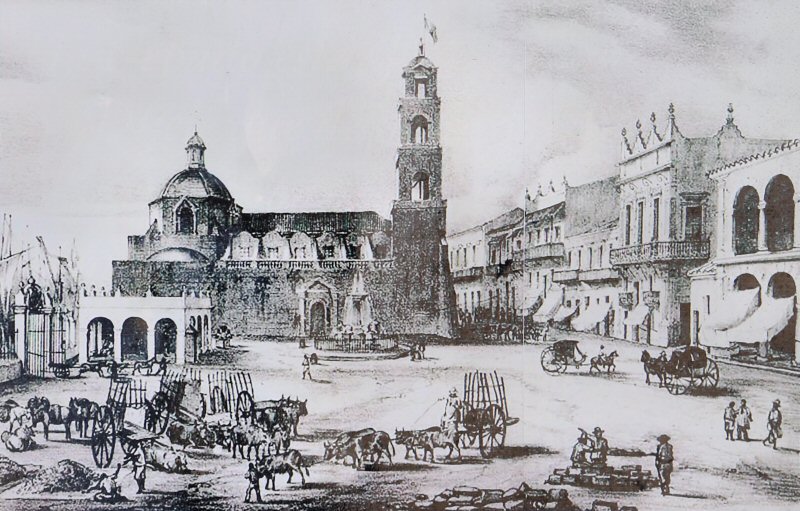
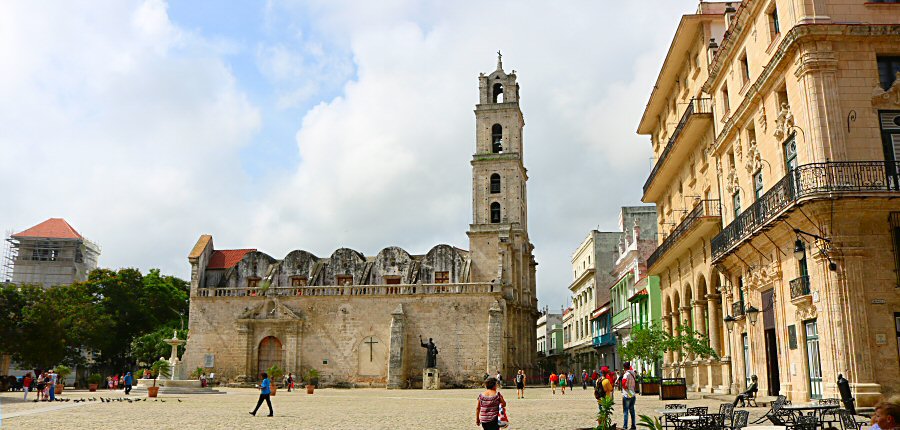
The Plaza de San Francisco is located
250 meters south to the Plaza de Armas, bordered by the Oficios
street and the Avenida Del Puerto.
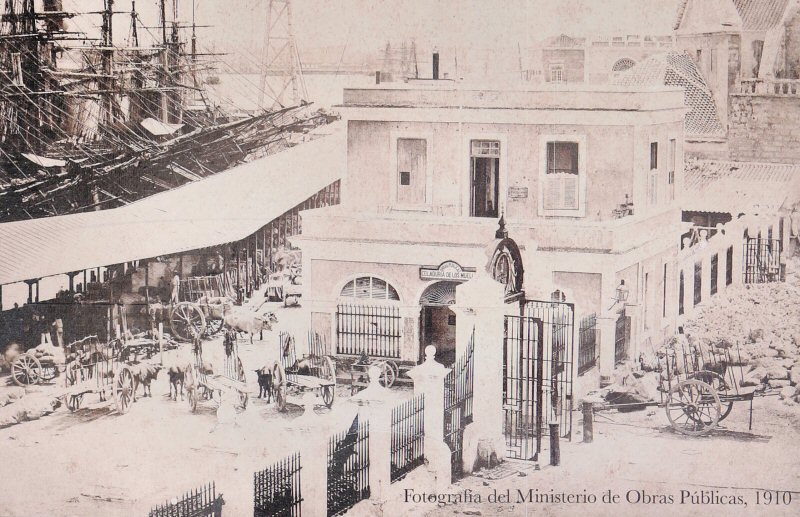
the portico of the square, drawn by
Frederico (Frédéric) Miahle
